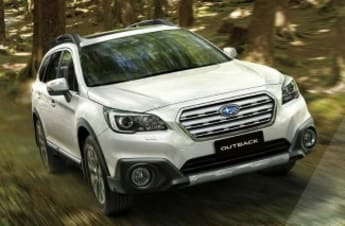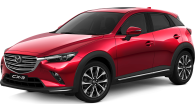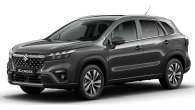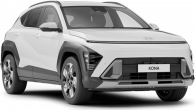Tim Robson road tests and reviews the new Subaru Outback 2.0D Premium with specs, fuel consumption and verdict.
It's a funny thing, but diesel has never really been part of the Subaru philosophy – even though it's a powerplant that suits the brand's multi-purpose cars to a tee.
All that changed in 2012 when the company debuted its long overdue 2.0-litre turbo diesel flat four – even though initially it was only available as a manual. The addition of the brand's CVT 'box in 2014 was the final piece in the puzzle, and the Outback is the beneficiary.
The Outback has always offered something of a middle ground for discerning owners who do need a little bit of off-road ability, space to move and the security of all-wheel drive (AWD).

A welcome redesign in 2014 also deleted some of the old model's more challenging exterior features.
What hasn't changed, though, is the basic premise of the Outback offering a family large station wagon with flexibility to burn.
Design
A greatly simplified and toned-down exterior treatment hasn't exactly turned the ugly duckling into a swan, but the fifth generation's Outback's style is no longer so left of centre.
Looking for load space? The Outback is a great place to start.
The Outback's more rugged visage comes from extra ride height, taller profile 18-inch tyres, black plastic overfenders and lower sill covers that stretch to the corners of the front and rear bumpers, and a pair of faux skid panels under the front and rear bar.
The mid-range 2.0D Premium also sports a large electric sunroof and roof rails with crossbars, as well as LED headlights and DRLs as well as large halogen fog lights.
Practicality
Looking for load space? The Outback is a great place to start, thanks to its cavernous and well shaped cargo area.
A generous 512 litres of cargo volume is available with the rear 60/40 split-fold seats in position, while a huge 1801 litres is available when the seats are flipped down at the pull of a lever inside the tailgate aperture.
Four cargo tie-down points are offered, but a net isn't included as standard. A removable cargo blind is part of the Outback's standard features, though, as is a powered tailgate on this Premium model.
A full size spare wheel also nestles under the cargo area floor.
Cupholders and bottle holders are plentiful.
There are two ISOFIX baby seat brackets for each of the outside rear seats, along with a third mount in the centre for a more traditional baby seat.
Cupholders and bottle holders are plentiful, with two cupholders up front, two in the centre rear armrest and divided bottle holders in each of the four doors.
All seating positions offer plenty of head and leg room, with a large, broad and flat rear seat providing plenty of room for older children.
A rear-mounted USB charger to supplement the two up front would have been a nice touch, but at least there's a pair of air vents to keep the rear seat passengers cool.
The Outback also offers 213mm of ground clearance, which will make short work of dirt roads and that extra large driveway at your local supermarket.
Of note; the diesel powered car can tow a braked trailer of up to 1700kg, 200kg more than the petrol powered versions.
Price and features
Subaru wagons have long carried a reputation as being tough and versatile creatures, but the market now demands more for its money.
The Outback 2.0D Premium is well specced at $41,990 before on road costs in manual guise; it's the exact same price as the auto-only 2.5i Premium petrol model.
A CVT transmission is available for $2500 extra.
An electric sunroof, privacy glass, 18-inch rims, high-beam assist for the self-levelling LED headlights, dual-zone air conditioning, auto lights and wipers, push-button start with smart key, leather trim, steering wheel and more are all standard.
Up front, a 7.0-inch central touchscreen controls all multimedia functions, while a smaller 5.0-inch screen takes pride of place in the centre console. Satellite navigation comes standard with the 2.5i Premium, as do powered and heated front seats in (mostly) leather.
Its other inclusion is its comprehensive safety system called EyeSight, which is available only in combination with the CVT transmission.
It's the third generation of the dual-camera based system that controls almost every aspect of the Outback's active and passive safety array.
As standard, the 2.0D Premium manual gets blind spot monitoring, lane change assist, rear cross traffic alert and rear view camera, and (in CVT transmission spec) adaptive cruise control, pre-collision assist, lane sway warning, brake light recognition, pre-collision brake assist, auto emergency braking, and more.
Engine and transmission
The Outback comes standard with a 2.0-litre flat-four (or boxer) turbocharged diesel engine that makes 110kW of power at 3600rpm and a healthy 350Nm of torque at 1800-2400rpm.
The Outback diesel is a sprightly enough performer, despite its almost 100kg weight penalty over its petrol auto sibling.
It's backed by the choice of two transmissions – a six-speed manual, or a continuously variable unit that offers a seven-step quasi-manual mode that can be activated via steering wheel mounted paddles.
The diesel Outback misses out on both stop/start fuel saving and Subaru's Si Drive system.
Fuel consumption
Subaru claims a combined fuel economy figure of 6.5 litres per 100km for the CVT version of the 2.0D Premium, and 5.7L/100km in manual.
The manual car weighs 1668kg and the auto 1773kg, and the Outback can hold 60 litres of diesel.
Over 270km of testing, we recorded a dash-indicated fuel economy figure of 7.1L/100km in the CVT.
Driving
With a very handy 350Nm of torque on tap, the Outback diesel is a sprightly enough performer, despite its almost 100kg weight penalty over its petrol auto sibling.
The diesel engine itself, too, is amazingly refined and serenely quiet at highway speeds, and it's more than adequate around town, as well. Smooth and tractable, it's a perfect complement to the long-range touring nature of the Outback.
Its ride and handling set up is surprisingly sophisticated, too, given the Outback's ride height and sheer bulk. It's sweetly damped, with a high quality ride that's neither too soft nor wallowing, nor too sharp and uncomfortable.
CVT technology has taken a quantum leap forward in recent times, and this one is a great match to the diesel powerplant.
The Outback's AWD system is biased towards front-wheel drive, but the extra grip from the rear end makes itself felt in trickier conditions.
There is single off-road mode for the Outback called X-Mode (again, only available with the CVT transmission) that adds low-down traction by holding lower gears and adding a hill-descent control mode, but the AWD system is well set up out of the box to add welcome traction in loose conditions.
The CVT transmission is perfectly adequate, and the seven steps are well spaced if you wish to use it in manual mode. CVT technology has taken a quantum leap forward in recent times, and this one is a great match to the diesel powerplant.
It's a quiet, refined machine, thanks to the flexibility and relative refinement of its petrol engine and excellent NVH (noise, vibration, harshness) suppression.
Safety
The Outback scores a maximum of five stars under the ANCAP safety rating system, thanks to seven airbags (including a driver's knee bag).
The manual version offers blind spot monitoring, lane change assist, rear cross traffic alert and rear view camera as standard.
Ownership
Subaru offers a three-year unlimited kilometre warranty on the Outback.
A three-year, 75,000km fixed price service plan is also offered, with the total cost coming to $2443.78.
The Outback, as with other Subaru models, requires a shorter service interval than other cars – six months/12500km.
Subaru Outback 2016: 2.0D Premium
| Engine Type | Diesel Turbo 4, 2.0L |
|---|---|
| Fuel Type | Diesel |
| Fuel Efficiency | 6.3L/100km (combined) |
| Seating | 5 |
| Price From | $14,850 - $19,580 |
| Safety Rating |
|
Verdict
The addition of a strong yet sophisticated diesel gives the large, practical and good looking Outback a real boost as a long-distance family rig that eschews the often compromised dynamics of the traditional diesel SUV wagon.
It pays for its torque at the diesel pump, but it's still good for 1000km or more from a single tank over a long trip.
Extra servicing requirements also play against it in the modern era of 12 month servicing, but the trade-offs are more than worth it.
Does Diesel power get you fired up about the Outback? Let us know what you think in the comments section below.
Click here to see more 2016 Subaru Outback pricing and spec info.
Pricing Guides

.jpg)
.jpg)
.jpg)
.jpg)
.jpg)
.jpg)
.jpg)
.jpg)
.jpg)
.jpg)
.jpg)
.jpg)
.jpg)
.jpg)
.jpg)
.jpg)
.jpg)
.jpg)
.jpg)
.jpg)


.jpg)








.png)








.jpg)


.jpg)


